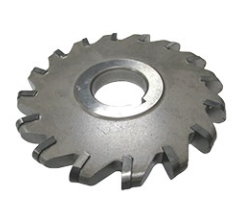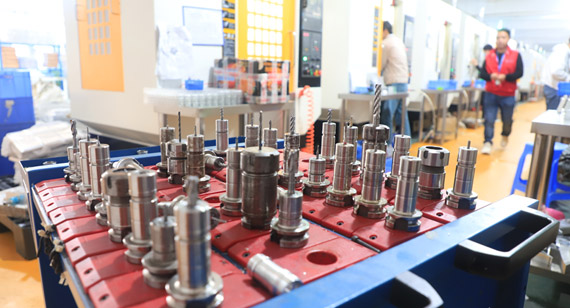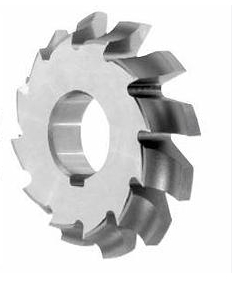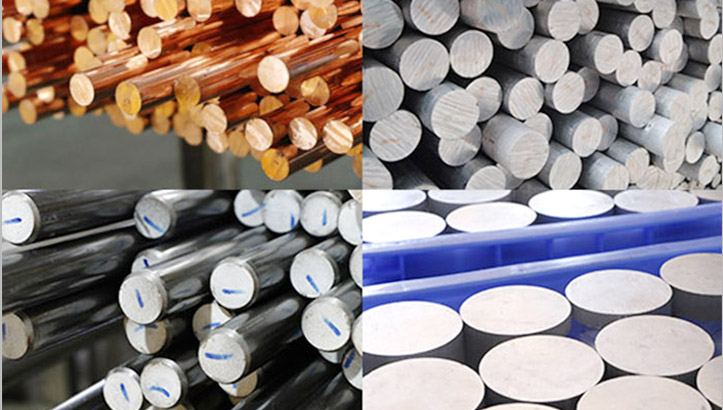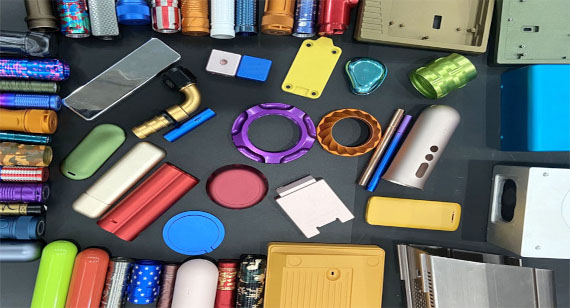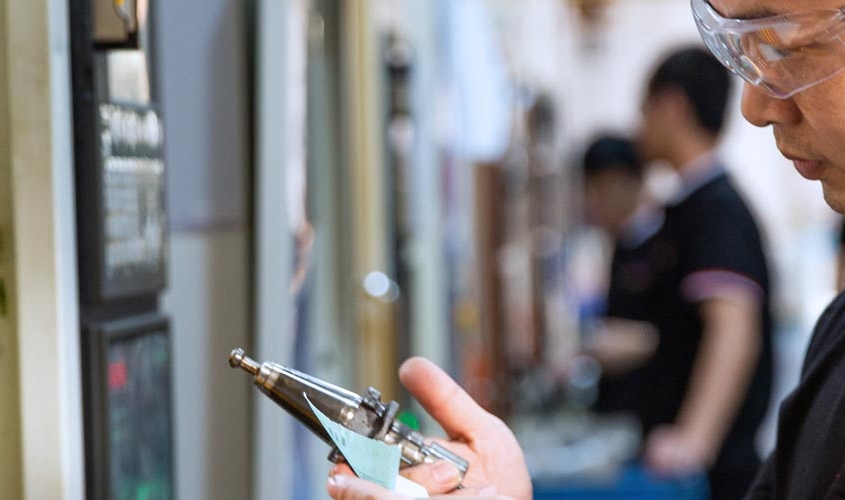What’s Side Milling? Types, Uses and Techniques
CNC Manufacturers encounter challenges in achieving high precision and surface finish for their components, with the crucial need for efficient material removal and versatility across various materials being addressed by side milling, a precision machining technique that transforms raw materials into accurately shaped parts.
This advanced technique uses specialized cutters to shape edges and contour surfaces with exceptional accuracy, ideal for metals, plastics, and composites. Optimize your production with side milling for flat surfaces, slots, and complex geometries with tight tolerances.
Dive deeper into the intricacies of side milling to enhance your manufacturing capabilities.
What is Side Milling?
Side milling is a machining technique where material is removed from the sides of a workpiece using specialized side milling cutters. This process is ideal for shaping edges, contouring surfaces, and achieving fine finishes on a variety of materials, including metals, plastics, and composites. Unlike other milling methods, side milling utilizes the cutter’s peripheral teeth to deliver exceptional precision and surface quality. It is particularly effective for creating flat surfaces, slots, and complex geometries with tight tolerances.
Key Principles of Side Milling
To achieve the best results with side milling, the following principles need to be carefully considered:
1. Spindle Speed: The spindle speed directly affects the quality of the surface finish. Faster speeds can improve the smoothness of the surface but may also lead to increased tool wear. The right balance between speed and feed is necessary to ensure an optimal finish.
2. Feed Rate: The feed rate refers to the rate at which the tool moves relative to the workpiece. If set too high, it may result in poor surface finishes or excessive tool wear, while too low may reduce machining efficiency.
3. Depth of Cut: The depth of cut influences material removal rates and tool life. Deeper cuts generally remove more material but put more strain on the tool. Shallow, multiple passes tend to be more manageable, reducing heat buildup and tool wear.
4. Cutting Forces and Tool Vibration: Because side milling primarily involves horizontal or vertical cuts, tool vibration can impact the accuracy and surface finish. Proper tooling and machine setup are essential to minimize vibration and improve precision.
Types of Side Milling
Side milling can be categorized into several types depending on the application and equipment used.
-
Single-Side Milling
Single-side milling uses one cutter to machine one side of the workpiece at a time. This method is often used for simpler shapes, such as grooves and flat surfaces. Single-side milling is ideal for lower-volume production. -
Double-Side Milling
This type uses two cutters to machine opposite sides simultaneously. It offers greater productivity and is often used for larger production volumes where consistency in symmetry is crucial. -
Finishing Milling
Finishing milling refines the surface finish of the workpiece. It ensures a smooth surface and high-precision contours, often used as the final step in the machining process for parts requiring tight tolerances and aesthetic quality.
Tools and Equipment Needed
For effective side milling, the right tools and equipment are essential.
1. Side Milling Cutters
Side milling cutters come in various designs, such as slab, plain, or staggered tooth cutters. They are specifically chosen based on the type of material being machined and the cutting requirements of the operation.
2. Milling Machines
Modern CNC milling machines are commonly used for side milling operations. These machines offer high rotational speeds, precise feed rates, and advanced cooling systems, improving overall machining efficiency and tool life.
3. Tool Holders and Spindles
Tool holders must be chosen based on the type of cutter used. High-quality tool holders minimize vibrations and enhance cutting precision. Spindles should offer stability to support the cutting tool’s rotational speed without excessive deflection.
4. Coolant Systems
Coolant systems are essential for side milling operations. They help cool both the tool and the workpiece, preventing overheating that could damage the material and decrease the tool life. The coolant also aids in chip removal and maintains the quality of the machined surface.
Side Milling vs. End Milling
While both processes are integral to machining, side milling and end milling differ significantly. Below are the key distinctions between side milling and end milling:
Side Milling
Side milling uses the peripheral teeth of the cutter to machine along the edges of a workpiece. It is ideal for creating flat surfaces, edge contours, and grooves with high precision and excellent surface finish.
This process is commonly used in applications requiring uniform cuts, tight tolerances, and consistent dimensional accuracy, such as slotting or edge profiling. The side milling cutters are designed for cutting along the sides of the workpiece, making them essential for surfacing mills and finishing milling operations. In addition, high-end milling machines with multi-function capabilities often use these side cuts tools to achieve smooth, even surfaces and high-quality results.
End Milling
End milling involves cutting primarily with the tip of the cutter, although the side edges may also be used. It is particularly effective for creating intricate internal features like pockets, holes, and complex 3D shapes.
With its flexibility and versatility, end milling excels in machining detailed geometries and contoured surfaces, making it indispensable for molds, dies, and aerospace components. In this case, the milling machine cutter is used to craft precise, detailed cuts in challenging shapes. End milling is often used in conjunction with cutting milling machines that can handle both side and end cutting capabilities, allowing for a broad range of applications.
Key Differences
While side milling focuses on edge machining and flat surfaces using the cutter’s side teeth, end milling specializes in internal and detailed features, relying on the cutter’s tip. Side milling cutters are optimal for edge profiling and uniform cuts, whereas end milling is preferred for intricate designs and complex geometries.
Additionally, side milling is often used for tasks like surfacing mills and finishing milling, while end milling is better suited for creating detailed pockets and internal features in high-precision applications.
Choosing the Right Cutting Tools and Materials for Effective Side Milling
Selecting the appropriate cutting tools for side milling is crucial for achieving precision, efficiency, and durability in machining operations. Factors such as material hardness, cutter geometry, and coating types play a vital role in optimizing the performance and longevity of cutting tools. Here’s a detailed breakdown:
Material Hardness
Harder materials, such as stainless steel or titanium, demand robust cutting tools like carbide or ceramic cutters to ensure effective machining. These materials benefit from coated cutters that enhance tool life and reduce wear under high-stress conditions, making them ideal for tackling challenging machining environments.
Cutter Geometry
The design of the side milling cutter significantly affects its performance. Factors such as the number of teeth, rake angle, and helix angle determine the material removal rate and the quality of the surface finish. For instance, cutters with fewer teeth and higher rake angles are suitable for achieving smoother finishes, while those with more teeth excel in faster material removal.
Coating Types
The use of advanced coatings like Titanium Nitride (TiN) and Titanium Aluminum Nitride (TiAlN) on side milling tools enhances their durability. These coatings reduce friction, minimize heat buildup, and extend tool life, particularly when machining tough or abrasive materials. Coated tools are essential for maintaining consistent performance in demanding applications.
Key Differences Between Side Milling and End Milling
Understanding the differences between side milling and end milling is essential for selecting the right machining process based on the application. While both techniques are integral to modern manufacturing, they serve distinct purposes and excel in different types of machining tasks. The table below highlights the key distinctions:
| Feature | Side Milling | End Milling |
|---|---|---|
| Cutting Location | Along the cutter’s side edges (peripheral teeth). | Primarily at the cutter’s tip, sometimes with side edges. |
| Primary Focus | Edge and surface machining, flat or contoured surfaces. | Intricate internal features, pockets, and complex geometries. |
| Applications | Slotting, flat surface machining, edge profiling. | Pocketing, drilling-like operations, 3D contouring. |
| Tools Used | Side milling cutters. | End mills, including flat-end, ball-nose, and others. |
| Best For | Straight, uniform surfaces requiring precision edges. | Detailed internal features and multi-axis geometries. |
Advantages and Disadvantages of Side Milling
Side milling is a widely used machining process offering numerous benefits for precision manufacturing, but it also comes with its own set of challenges. A clear understanding of its advantages and disadvantages can help in making informed decisions for specific applications. Below is a detailed breakdown:
Advantages
-
High Precision
Side milling is ideal for applications requiring exceptional accuracy. It excels in creating flat surfaces, precise slots, and contoured edges, making it indispensable in industries like aerospace, automotive, and medical device manufacturing. -
Versatility
The process is adaptable to a variety of materials, including metals, plastics, and composites. This versatility allows it to be applied across a broad range of industrial applications, from creating detailed prototypes to producing high-volume parts. -
Efficient Material Removal
With the ability to engage multiple teeth of the cutter simultaneously, side milling ensures efficient material removal. This not only enhances productivity but also reduces cycle times in high-volume production scenarios.
Disadvantages
-
Tool Wear
The continuous cutting action along the edges of the workpiece can lead to significant tool wear, particularly when machining hard materials like stainless steel or titanium. Regular maintenance and high-quality cutting tools are necessary to mitigate this issue. -
Setup Complexity
Proper setup and alignment are critical for successful side milling. Misalignment can result in uneven surfaces, poor dimensional accuracy, and increased tool wear. Achieving precise setups often requires skilled operators and advanced machinery, adding to the complexity and cost of the process.
Common Challenges in Side Milling
While side milling offers high precision and efficiency, it is not without its challenges. Understanding and addressing these issues is essential for maintaining quality and productivity in machining operations. Below is an exploration of the most common challenges faced during side milling and potential solutions.
Excessive Tool Wear
Excessive tool wear is a common issue in side milling, particularly when machining hard materials like titanium or stainless steel. The continuous cutting along the edges of the workpiece generates high friction and heat, accelerating tool degradation. To address this, high-quality coated cutters, such as those with Titanium Aluminum Nitride (TiAlN) coatings, are recommended. Additionally, optimizing cutting speeds, feed rates, and using effective cooling systems can significantly reduce wear and prolong tool life. Routine monitoring of tool condition ensures timely replacements, minimizing defects and downtime.
Vibration Issues
Vibration during side milling can adversely affect surface finish and precision. This problem often arises from unstable machine setups, unbalanced tools, or improper clamping of the workpiece. To combat vibration, ensure the machine setup is rigid, tools are correctly aligned, and workpieces are securely fastened. High-quality tool holders and balanced cutters can further reduce vibrations. Additionally, employing gradual cutting strategies, such as helical or ramped entries, minimizes sudden impacts, leading to smoother operations and better results.
Surface Irregularities
Surface irregularities, such as scalloping or uneven cuts, can occur during side milling due to improper cutting depths, tool deflection, or suboptimal cutting parameters. These imperfections often require additional finishing passes, increasing production time and costs. To avoid such issues, use cutters with higher tooth counts for better surface quality and ensure proper adjustment of feed rates and cutting depths. Selecting rigid tools and employing a final finishing pass with precise parameters can effectively eliminate surface imperfections, resulting in a flawless finish.
Applications of Side Milling
Side milling is a versatile machining process used across various industries that demand precision, efficiency, and high-quality surface finishes. It is particularly suited for producing complex geometries and critical features with tight tolerances. Below are key applications of side milling in different sectors:
Automotive Industry
Side milling is indispensable in the automotive sector, where precision and durability are critical. It is used to machine essential components such as engine parts, transmission systems, and chassis elements. For example, cylinder heads and camshafts are machined with side milling to ensure smooth engine operation. Similarly, gear profiles in transmissions are crafted with tight tolerances to guarantee seamless power transfer, while chassis components like suspension links rely on side milling for accurate fits and reliable performance.
Medical Devices
The medical industry demands high-precision machining for devices that interact with the human body. Side milling is used to create surgical instruments such as scalpels and forceps, ensuring sharpness and flawless finishes. Additionally, implants like orthopedic plates and dental fixtures require side milling for their intricate geometries and biocompatibility. Diagnostic equipment and surgical device housings are also machined with side milling to meet stringent regulatory standards for safety and functionality.
Industrial Equipment
In the industrial sector, side milling is essential for crafting components that require precision and durability under demanding conditions. Gears and sprockets are machined to ensure smooth motion and prolonged wear resistance, while shafts are milled to achieve slots and flats necessary for assembly. Hydraulic components, such as valves and pistons, also rely on side milling to produce exact dimensions and maintain performance in high-pressure environments.
Aerospace Industry
Aerospace manufacturing prioritizes precision, reliability, and performance, making side milling a key process. Precision components like brackets and flanges are machined to exact specifications to ensure safety. Side milling is also used for engine housings and electronic enclosures, where tight tolerances and resilience in extreme environments are critical. Additionally, structural parts such as wing ribs and fuselage frames are milled to maintain the structural integrity of aircraft while minimizing weight.
Key Considerations: When to Choose Side Milling
Side milling is a versatile machining process, but its effectiveness depends on specific project requirements and conditions. Below are key factors to consider when deciding whether side milling is the best choice for your application.
Workpiece Geometry
Side milling is ideal for machining flat surfaces, edge contours, and slots. It excels in producing straight, uniform profiles and is particularly suitable for workpieces requiring precision along edges or sides. For example, creating grooves or refining the edges of plates and structural parts are tasks where side milling performs exceptionally well.
Required Tolerances and Surface Finish
When high precision and superior surface finishes are essential, side milling is often the process of choice. Its ability to deliver tight tolerances makes it suitable for critical applications, such as aerospace components, medical devices, and automotive parts. Additionally, it minimizes post-machining processes by achieving smooth finishes directly during the operation.
Material Type
The choice of side milling depends on the material being machined. It works effectively on a variety of materials, including metals, plastics, and composites. However, harder materials like stainless steel or titanium may require advanced cutting tools, such as carbide cutters or those with durable coatings, to ensure performance and tool longevity.
Production Speed and Efficiency
For high-volume production or projects requiring rapid material removal, side milling offers excellent productivity. Techniques like double-side milling, where both sides of the workpiece are machined simultaneously, significantly enhance efficiency, making it a preferred method for large-scale manufacturing.
Complexity of the Machining Task
Side milling is best suited for tasks requiring linear and straightforward machining. For intricate internal features, pockets, or 3D geometries, end milling might be a better option. However, for machining edges, slots, or simple contours, side milling provides a more efficient and precise solution.
Start Your CNC Milling at VMT
At VMT, we excel in delivering tailored, high-precision machining services tailored to your specific requirements. Leveraging state-of-the-art technology and a seasoned team of six engineers with two decades of experience, we guarantee unmatched precision, efficiency, and quality across all your projects.
Side milling is a cornerstone of our expertise, and we are dedicated to maximizing its potential to meet your manufacturing needs.. Contact us now for a free quote!
In Conclusion
Side milling is an indispensable technique for manufacturers seeking precision, efficiency, and versatility in machining. By understanding the process’s principles, tool selection, and challenges, manufacturers can optimize their operations to deliver high-quality parts with exceptional finishes. Whether you’re producing automotive components, industrial machinery, or medical devices, side milling is a reliable solution for precision machining.
Frequently Asked Questions About Side Milling
What is the Side Milling Process?
Side milling is a machining process where the cutting tool removes material from the side of a workpiece. It uses the peripheral cutting edges of the tool to shape or refine the part’s sides, creating precise features like slots or shoulders. This technique is ideal for creating flat surfaces or intricate contours on the workpiece, often used in precision engineering. Side milling provides a smooth finish and high dimensional accuracy.
What is Side and Face Milling?
Side and face milling involves a cutting tool with cutting edges on its side and circumference. This combination allows simultaneous machining of vertical and horizontal surfaces, making it efficient for operations like slotting, cutting grooves, or shaping shoulders. This method reduces machining time and enhances accuracy by enabling two-directional cutting in a single pass.
What is Milling Behavior?
Milling behavior refers to how materials respond to the milling process, including factors like tool wear, surface finish, chip formation, and cutting forces. It depends on variables such as the tool material, workpiece properties, feed rate, and speed. Understanding milling behavior is crucial for optimizing the process to achieve precision, efficiency, and extended tool life.

